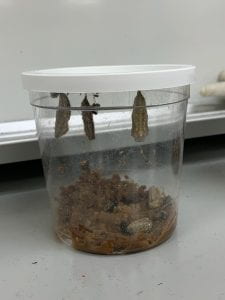Today we released our butterflies into our butterfly garden. It was so exciting to see the butterflies fly out of their netting habitat and into the world! We never knew which way they would fly once free. We hope they all feel at home in our garden.





























